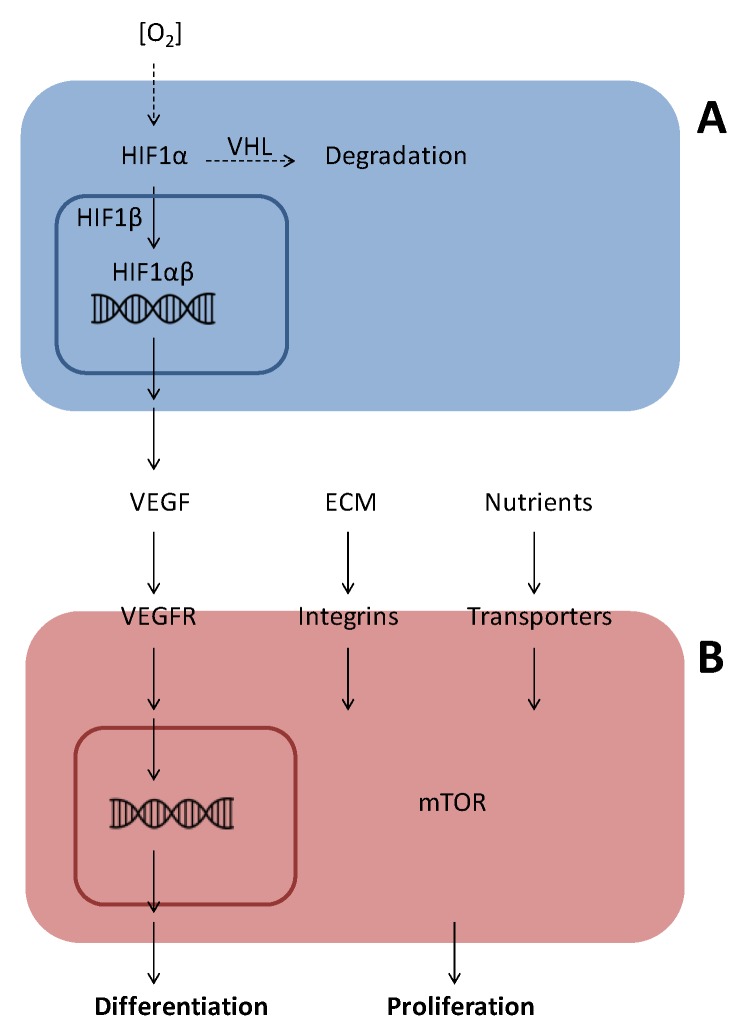Figure 2.
Oxygen sensing by HIF (A) and signal transduction by VEGF (B). (A) Under conditions of low oxygen concentrations in the cytoplasm, HIF1α undergoes nuclear translocation and associates with HIF1β in the nucleus, where the dimeric HIF1 stimulates transcription of genes with hypoxia-responsive elements (HRE) in their promoters. Under normoxia, HIF1α is hydroxylated on specific prolines and this leads to association with the VHL protein, an E3 ligase, which stimulates ubiquitin-dependent proteasomal degradation of HIF1α. (B) Binding of VEGF to its plasma membrane receptor (VEGFR) initiates a pleiotrophic response with autophosphorylation, activation of associated adaptor proteins and phosphorylation of membrane-associated signal transducing proteins. These signalling pathways lead to nuclear translocation of transcription factors and activation of gene transcription resulting in cellular protein synthesis, differentiation and/or proliferation.

